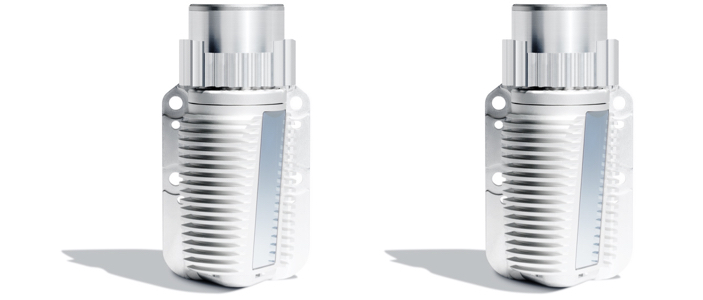Way back in the halcyon days of 2011, Google was knee-deep into developing its first autonomous vehicles when it decided that none of the lidar solutions on the market were quite good or cheap enough and started developing its own sensor. Even while the automotive lidar market exploded, Google’s self driving car project kept on developing its own lidar sensors. Today, with the name Waymo, the company has three sensors: one spec’ed for long range, one for mid range, and one for short range.
In an unexpected move, Waymo has announced that it is now selling the short-range lidar sensor as the Laser Bear Honeycomb with the expectation that it will find users in robotics, security, agricultural tech, and, we might guess, 3D mapping.
Price and specs
Let’s get to the details first. Waymo has not announced a price, so you’ll have to contact them directly to figure that out. Chances are good that the price per unit changes depending on how many you want to buy. Waymo also has not released a spec sheet for the sensor, but makes the intriguing claim that you can get the specs you need for your application, suggesting that it might be a good fit for a lot of different applications.
Here’s what we do know: It’s small, having been designed to fit inside the side-view mirrors of a car. On top of that, it has
Wide field of view: Where some 3D lidar have a vertical field of view (FOV) of just 30°, the Honeycomb has a vertical FOV of 95°, plus a 360° horizontal FOV. That means one Honeycomb can do the job of three other 3D sensors stacked on top of one another.
Multiple returns per pulse: When the Honeycomb sends out a pulse of light, it doesn’t just see the first object the laser beam touches. Instead, it can see up to four different objects in that laser beams’ line of sight (e.g., it can see both the foliage in front of a tree branch and the tree branch itself). This gives a rich and more detailed view of the environment, and uncovers objects that might otherwise be missed.
Minimum range of zero: The Honeycomb has a minimum range of zero, meaning it can see objects immediately in front of the sensor. This enables key capabilities such as near object detection and avoidance
A new business model
It’s clear already that Waymo sees its sensor being used outside the automotive industry, which should be good news for the lidar market. Why? Where the automotive lidar market has seen a huge influx of small, low-cost products in recent years, the non-automotive lidar markets are strangely lacking in small, low-cost sensors. Waymo entering the market suggests that we’re in for some healthy competition, and all the benefits that derive from that, like faster innovation, lower costs, and a wider range of products.
Need to build a handheld lidar scanner, or a backpack? The Laser Bear Honeycomb’s specs remain a mystery at the moment, but it certainly seems like it is going to offer you another viable option for your application.
Waymo is already working with “dozens” of potential customers, so get in touch when you’re ready to go. Check out the contact form here.






